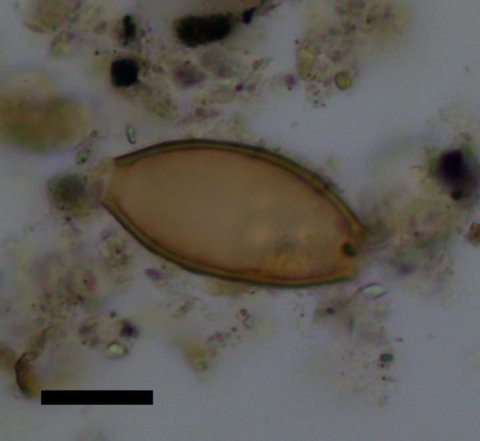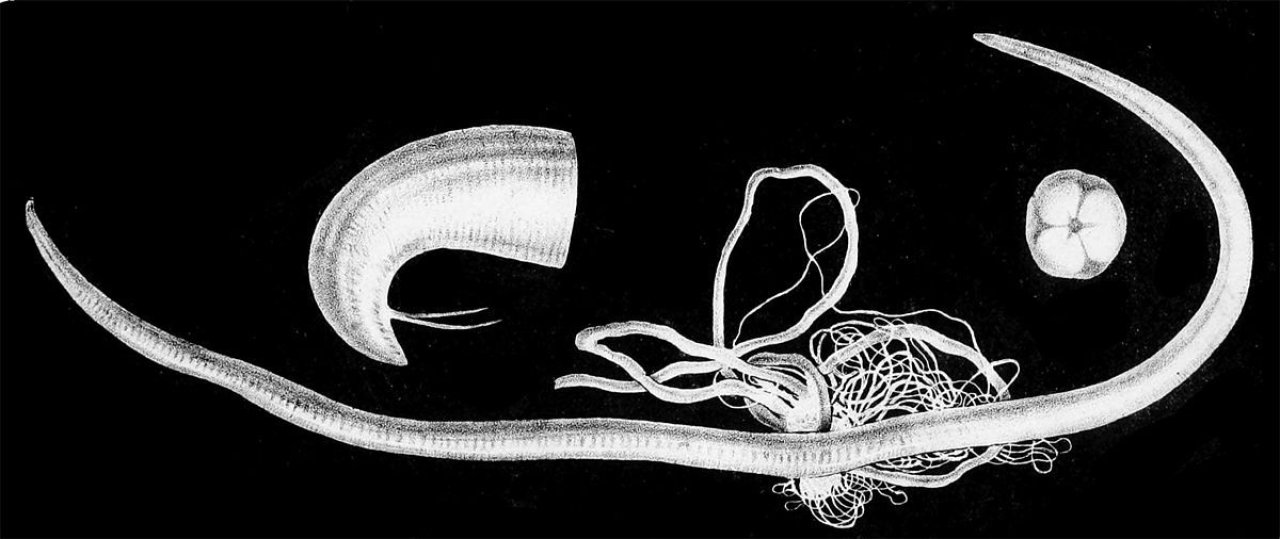Researchers studying prehistoric poop on the Greek island of Kea have finally identified the parasitic worms that Hippocrates, the ancient Greek physician widely considered the father of modern medicine, described in his famous medical texts 2,500 years ago.
Scientists collected decomposed human poop from the pelvic bones of skeletons from the Neolithic period, Bronze Age and Roman periods—so, from points between around 10200 B.C. to around the fourth century A.D. They then studied the soil produced by said poop.
Analysis by the University of Cambridge scientists revealed it contained eggs from two kinds of parasitic worms, or helminths: the whipworm (Trichuris trichiura) and roundworm (Ascaris lumbricoides), which date respectively to the Neolithic and Bronze Age. These two species, the researchers concluded, are among those that infected the patients Hippocrates wrote about, making this the earliest known evidence of parasitic worms in ancient Greece. A paper describing the discovery was published in the Journal of Archaeological Science: Reports.

Hippocrates lived in the fifth and fourth centuries B.C. The medical texts he produced in his lifetime (the most well-known of which is probably the Hippocratic Oath, the pledge all physicians take to do no harm) included descriptions of parasitic infections. These caused their hosts to vomit up worms, among other unfortunate symptoms such as diarrhea, fevers, abdominal swelling and heartburn, according to the new research.
Two of the intestinal worms Hippocrates referenced were called Helmins strongyle (described as a large round worm) and Ascaris (a small round worm). The Ascaris worm, study leader Piers Mitchell told Newsweek, could be either a pinworm (a small, white worm responsible for most intestinal worm infections in the United States) or a whipworm (common in dogs, but can live in the human large intestine, too). The Helmins strongyle worm likely corresponds to what today we call the roundworm (larger, with some types growing up to three feet long).
Previous researchers had excavated the discovery site on Kea in the 1960s and '70s, according to Mitchell, and when they stored the ancient skeletons they'd dug up, they left them covered in poop-derived, parasite egg-containing soil.

"Most people would wash the bones, then study the bones, then publish," Mitchell, a biological anthropologist at Cambridge, told Newsweek. "But with this one, they never actually got around to cleaning the bones and studying them. So we were fortunate that they didn't finish, because it meant we could take samples."
The worms themselves decompose with time. But their eggs, protected by a hard shell, do not, which is why they were still there waiting for Mitchell and his colleagues 2,500 years after they were laid.
Whipworms and roundworms can live inside human intestines, Mitchell said, where they absorb nutrients from our food and produce thousands of eggs each day. Infections spread through contact with the host's poop, since the poop contains the eggs.
Both species are still around today, and, according to Mitchell, are especially widespread in developing countries and regions with poor sanitation. A few stray worms in your system won't actually do much damage, Mitchell said, but enough of them can cause dangerous infection and malnutrition. Whipworms are 1 or 2 inches long, while roundworms are roughly 7 to 12 inches long.
.@Ben_Westcott explains what parasitic worms in #defector reveal about conditions in #NorthKorea: https://t.co/nt95lYTeHM pic.twitter.com/iYfdP8zP4v
— CNN Asia Pacific (@cnnasiapr) November 23, 2017
If all this sounds rather familiar, it might be because it's been less than a month since a malnourished defector whose intestines were infested with 10-inch parasitic worms escaped from North Korea.
The South Korean doctor who operated on the defector said the parasite was a species of roundworm, according to the Korea Biomedical Review. Mitchell said the description is compatible with the roundworms his team linked to Hippocrates (though there's no way of knowing whether the exact species are the same). The doctor's statement that he and his colleagues had "discovered a parasite never seen in Koreans before" also suggests the defector's intestines contained at least one additional species. Roundworms, said Mitchell, were common in South Korea up until the last few decades—when the country's economy began to improve.


















